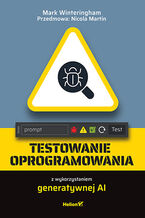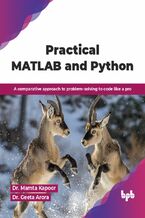Master python programming language in easy steps
Key Features
Start from basics of Python
Control statement, loop structure, break, continue, and pass statement
Detailed description of Python data types: string, tuple, list, and dictionary with the help of example
Organizing code using function, modules, and packages
Saving text and complex data in text, pickle, and JSON files
Learn the use of time and time zones
Parallel execution with the help of threading, multiprocessing, and subprocessing
Helpful modules for industry
Description
It is said that learning Python is easy, but if a learner did not get the right path, then things can get complicated. This book is designed in such a way that you start from basics, followed by advance levels and then move on to some industry-related modules.
The initial chapters are written in a simple manner, some chapters are of advance level. Start from the data structure of Python, such as string, list, tuple, and dictionary. The function and module chapter will let you know how to organize a large code. The built-in functions and modules like collections will give you greater flexibility to write efficient codes. The "time" chapter is very important when we deal with time-related things.
The mid-chapter contains the advance chapters such as regular expressions, interaction with OS, and multithreading. These chapters are helpful when we want to search the pattern, run the OS commands, and execute the program in parallel. The last chapters are specially designed from an industry point of view. In order to ensure a high quality of code, we use config-parser to avoid hard-coding and logger to log the events. In the multiprocessing and subprocess chapter, you will learn creation, execution, and communication between the processes.
What will you learn
Python for developers is created by taking beginner and intermediate programmers. The book starts from scratch and takes you to the advanced level. After learning advance levels, you will learn parallel programming using multithreading, multiprocessing, and sub-processing. The book will provide information on modules which will be helpful form industry perspective. The book also contains the question for the preparation of the interview. You will also learn the difference between Python 2.7 and Python 3.7. Some of the chapters include an advance part, which will give an in-depth knowledge of the chapters.
Who this book is for
This book is for whoever wants to learn Python and aspires to become a developer or work on projects. Beginners can read this book easily, however, a little knowledge about the programming concepts would be helpful. Basic knowledge of computers would suffice.
Table of Contents
1. Introduction to Python
2. Python Operators
3. Control statements and loop
4. Strings
5. List and tuple
6. Dictionary and sets
7. Functions
8. Modules
9. Exception handling
10. File handling
11. Collection
12. Random modules and built-in function
13. Time
14. Regular expression
15. Operating system interfaces
16. Class
17. Threads
18. Queue
19. Multiprocessing and Subprocess
20. Useful Modules
About the Author
Mohit (mohitraj.cs@gmail.com) is a Python programmer with a keen interest in the field of information security. He has completed his Bachelor's degree (B.tech)in Computer Science from Kurukshetra University, Kurukshetra, and a Masters in Engineering (2012) in Computer Science from Thapar University, Patiala. He is a CEH, ECSA from EC-Council USA. He has worked in IBM, Teramatrix (Startup), and Sapient.
LinkedIn Profile: https://www.linkedin.com/in/mohit-990a852a/



































Oceny i opinie klientów: Python for Developers Mohit Raj
(0)